#rare earth minerals
Text
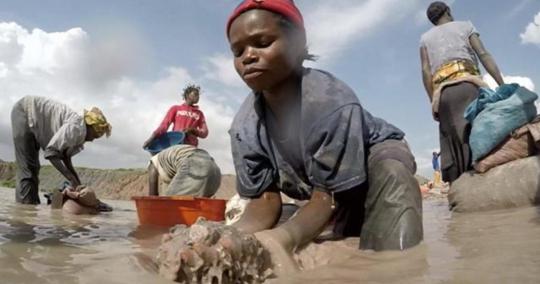
Children still mining cobalt for gadget batteries in Congo
A CBS News investigation of child labor in cobalt mines in the Democratic Republic of Congo has revealed that tens of thousands of children are growing up without a childhood today – two years after a damning Amnesty report about human rights abuses in the cobalt trade was published. The Amnesty report first revealed that cobalt mined by children was ending up in products from prominent tech companies including Apple, Microsoft, Tesla and Samsung.
There's such sensitivity around cobalt mining in the DRC that a CBS News team traveling there recently was stopped every few hundred feet while moving along dirt roads and seeing children digging for cobalt. From as young as 4 years old, children can pick cobalt out of a pile, and even those too young to work spend much of the day breathing in toxic fumes.
What's life like for kids mining cobalt for our gadgets?
So, what exactly is cobalt, and what are the health risks for those who work in the DRC's cobalt mining industry?
What is cobalt?
Cobalt – a naturally occurring element – is a critical component in lithium-ion, rechargeable batteries. In recent years, the growing global market for portable electronic devices and rechargeable batteries has fueled demand for its extraction, Amnesty said in its 2016 report. In fact, many top electronic and electric vehicle companies need cobalt to help power their products.
The element is found in other products as well.
"Cobalt-containing products include corrosion and heat-resistant alloys, hard metal (cobalt-tungsten-carbide alloy), magnets, grinding and cutting tools, pigments, paints, colored glass, surgical implants, catalysts, batteries, and cobalt-coated metal (from electroplating)," says the U.S. Centers for Disease Control and Prevention.
More than half of the world's supply of cobalt comes from the DRC, and 20 percent of that is mined by hand, according to Darton Commodities Ltd., a London-based research company that specializes in cobalt.
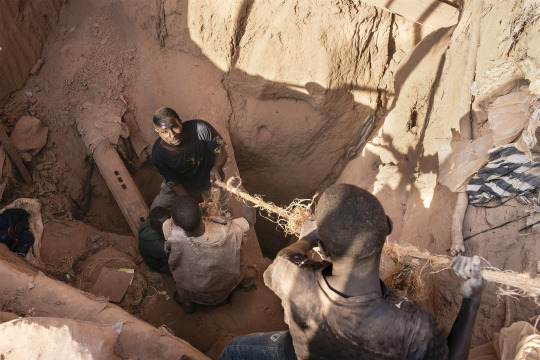
Health risks of chronic exposure
According to the CDC, "chronic exposure to cobalt-containing hard metal (dust or fume) can result in a serious lung disease called 'hard metal lung disease'" – a kind of pneumoconiosis, meaning a lung disease caused by inhaling dust particles. Inhalation of cobalt particles can cause respiratory sensitization, asthma, decreased pulmonary function and shortness of breath, the CDC says.
The health agency says skin contact is also a significant health concern "because dermal exposures to hard metal and cobalt salts can result in significant systemic uptake."
"Sustained exposures can cause skin sensitization, which may result in eruptions of contact dermatitis," a red, itchy skin rash, the CDC says.
Despite the health risks, researchers with Amnesty International found that most cobalt miners in Congo lack basic protective equipment like face masks, work clothing and gloves. Many of the miners the organization spoke with for its 2016 report – 90 people in total who work, or worked, in the mines – complained of frequent coughing or lung problems. Cobalt mining's dangerous impact on workers and the environment
Some women complained about the physical nature of the work, with one describing hauling 110-pound sacks of cobalt ore. "We all have problems with our lungs, and pain all over our bodies," the woman said, according to Amnesty.
Moreover, miners said unsupported mining tunnels frequently give way, and that accidents are common.
Miners know their work is dangerous, Todd C. Frankel wrote late last month in The Washington Post.
"But what's less understood are the environmental health risks posed by the extensive mining," he reported. "Southern Congo holds not only vast deposits of cobalt and copper but also uranium. Scientists have recorded alarming radioactivity levels in some mining regions. Mining waste often pollutes rivers and drinking water. The dust from the pulverized rock is known to cause breathing problems. The mining industry's toxic fallout is only now being studied by researchers, mostly in Lubumbashi, the country's mining capital."

"These job are really desired"
Despite the dangers and risks of working as miners in the cobalt industry, at least of the some miners in the Congo "love their jobs," according to Frankel.
"When I talked to the miners there, none of them want to lose their jobs or give up their jobs. They love their jobs," Frankel said Tuesday, speaking on CBSN. "In a country like Congo, mining is one of the few decently paying jobs to be had there, and so they want to hold onto these jobs."
They also want fair treatment, decent pay, and some safety, "and they would love for their kids to not work in the mines," he said.
"It's a poverty problem," Frankel said. "These parents I talked to – they don't want their kids working in these mines. The problem is that their school fees – schools cost money, and you know, food costs money, and they sort of need their kids to work in there."
Poverty also drives children into the mines instead of school – an estimated 40,000 of them work in brutal conditions starting at very young ages.
The thousands of miners who work in tunnels searching for cobalt in the country "do it because they live in one of the poorest countries in the world, and cobalt is valuable," Frankel wrote in the Washington Post article.
"Not doing enough"
CBS News spoke with some of the companies that use cobalt in their lithium-ion batteries. All of the companies acknowledged problems with the supply chain, but said they require suppliers to follow responsible sourcing guidelines. Apple, an industry leader in the fight for responsible sourcing, said walking away from the DRC "would do nothing to improve conditions for the people or the environment."
Read company responses here
Amnesty said in November, however, that "major electronics and electric vehicle companies are still not doing enough to stop human rights abuses entering their cobalt supply chains."
"As demand for rechargeable batteries grows, companies have a responsibility to prove that they are not profiting from the misery of miners working in terrible conditions in the DRC," the organization said. "The energy solutions of the future must not be built on human rights abuses."
An estimated two-thirds of children in the region of the DRC that CBS News visited recently are not in school. They're working in mines instead.
CBS News' Debora Patta spoke with an 11-year-old boy, Ziki Swaze, who has no idea how to read or write but is an expert in washing cobalt. Every evening, he returns home with a dollar or two to provide for his family.
"I have to go and work there," he told Patta, "because my grandma has a bad leg and she can't."
He said he dreams of going to school, but has always had to work instead.
"I feel very bad because I can see my friends going to school, and I am struggling," he said.
Amnesty says "it is widely recognized internationally that the involvement of children in mining constitutes one of the worst forms of child labour, which governments are required to prohibit and eliminate."
#cobalt#PD Congo#PDR Congo#cobalt mining by children#amnesty university#The toll of the cobalt mining industry on health and the environment#Congo Economic Theft#minerals#rare earth minerals#tesla#iphones#cellphone batteries#ev batteries#lithium batteries#child labour#forced child labor#poverty#systemic racism
47 notes
·
View notes
Text
SOME OF THOSE THAT WORK FORCES.
ARE THE SAME THAT BURN CROSSES.
Keep watching, keep learning, keep speaking about the crimes against humanity committed by the world's wealthy elite. Just because you sleep comfortably does not make you innocent. The powerful and plentiful of the EU and North America fund the crises in Palestine, in Congo, and in Sudan.
Do NOT desensitise yourself to atrocities committed around the globe, do NOT over-consume traumatic and disturbing materials of human suffering, do NOT stop at reblogging, and DO NOT DISENGAGE OR DROP-OUT.
DO keep reading about the history, listen to the words spoken by the people on the ground and who are there, bring it up at the dinner table, normalise politics in the tearoom, spread kindness, wellness and be grateful for what you have.
#colonialism#post capitalism#indigenous#palestine#sudan#congo#rare earth minerals#metallurgy#open science#open access#new zealand#aotearoa#conservative#judaism#islam#christianity#catholocism#bureaucrats#stratification#gentrification#fauxmoi
34 notes
·
View notes
Photo

12 notes
·
View notes
Text
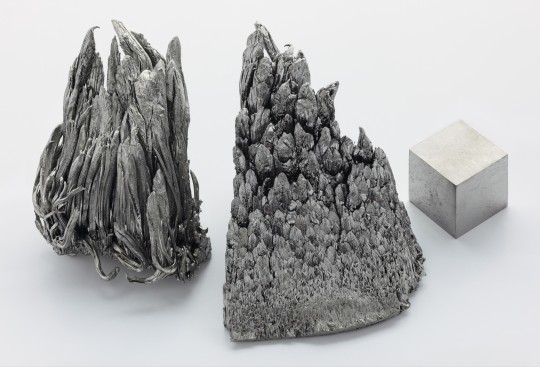
Yttrium samples. (Wikipedia)
#archive#archiving#web archive#yttrium#rare earth elements#chemical elements#metals#rare earth metals#rare earth minerals#chemistry#periodic table of elements#wikipedia
25 notes
·
View notes
Text
Ranked: The Most Expensive Metals on Earth! Click here to find out more ->
#rare earth elements#rare earth minerals#expensive things#most expensive things#interesting facts#illuminating facts#expensive metals
16 notes
·
View notes
Text
The Rare Earth - Thorium Link
Chapter 10: The Rare Earth's Thorium Link
How Rare Earths are often discarded as radioactive waste and how the Thorium contained within could provide clean safe and cheap nuclear power
Currently the EPA requires that Thorium (often found in association with rare earth minerals) must be handled in a "...a very specific and costly way...".... causing rare earth mining in the United States to be "prohibitively expensive." .... however, both the environmental and economic problems associated with rare earth mining and processing in the US might be solved ...(by Thorium extraction and utilization) because Thorium can be used in a special type of nuclear reactor which has been shown to be proliferation resistant and safer than the High Pressure Water Reactors which are based on Uranium.
While there are currently no operating Thorium reactors, in the 1960s there was a Thorium fed Liquid Fluoride Salt Reactor at Oakridge National Laboratory that operated without incident for years until it was shut down by Congress in favor of fast breeder reactors.
#rare earth metals#rare earth minerals#rare earth elements#thorium#green energy#nuclear power#technology#mining#nuclear reactor#Chinese competition#national security#neodymium#samarium#Yttrium#Scandium#Cerium
4 notes
·
View notes
Link
The Middle East is blessed with natural gas and crude oil. In the last 78 years since the end of World War II, the once-deserted land has become an energy hub of the world.
Some countries in the region have amassed enormous wealth by exporting hydrocarbons to industrial behemoths like China, the United States, the United Kingdom, and others. However, even with abundant hydrocarbon resources, some countries like Iraq and Iran lost their fortunes as a result of the currency war dominated by the United States and the European Union.
0 notes
Photo

The Amaroq Minerals Corporation is a publicly traded company on the London Stock Exchange. This morning, their shares were down 1%. While this may not seem like a significant decrease, it is worth noting that Amaroq Minerals is a leading producer of rare earth minerals. What could be causing this decline in value?
#Companies#Price Articles#fault#Amaroq Minerals#London Stock Exchange#shares down 1%#rare earth minerals#value decline
0 notes
Text

Researchers at Penn State have uncovered a fresh method through which bacteria may choose between several rare earth elements. When a bacterial protein is attached to some rare earths, it has the capacity to bind to another unit of itself, or "dimerize," but prefers to stay a single unit, or "monomer," when bound to other rare earths. Read more
0 notes
Photo

New Post has been published on https://news.mn05.org/155/russia-continues-to-make-inroads-in-africa/
Russia Continues to Make Inroads in Africa
In recent years, Russia has been actively pursuing the acquisition of rare earth minerals in Africa, and reports suggest that the country has made significant progress in its efforts.
Rare earth minerals are essential components in a wide range of high-tech products, including smartphones, electric cars, and advanced weaponry. As such, securing a steady supply of these minerals has become a top priority for many countries, including Russia.
According to recent reports, Russian companies have been making significant investments in rare earth mining operations across the African continent. One such operation is the Ngualla Rare Earth Project in Tanzania, which is being developed by Russia’s Uranium One Group.
The Ngualla project is said to contain one of the largest and highest-grade rare earth deposits in the world, and it is expected to produce over 4,000 tonnes of rare earth oxides annually. The project is also expected to create thousands of jobs and generate significant revenue for Tanzania.
In addition to the Ngualla project, Russian companies have been exploring other rare earth mining opportunities in countries such as Angola, Namibia, and South Africa. These efforts are part of Russia’s broader strategy to diversify its sources of rare earth minerals and reduce its dependence on China, which currently dominates the global rare earth market.
While Russia’s progress in securing rare earth minerals in Africa is significant, it has not been without its challenges. Some experts have expressed concerns about the environmental and social impact of these mining operations, as well as the potential for corruption and human rights abuses.
Nonetheless, Russia’s efforts in this area are expected to continue, as the demand for rare earth minerals is only expected to grow in the coming years. With its significant investments in African mining operations, Russia is positioning itself to be a major player in the global rare earth market for years to come.
0 notes
Video
youtube
"Cobalt Red": Smartphones & Electric Cars Rely on Toxic Mineral Mined in Congo
The Democratic Republic of the Congo produces nearly three-quarters of the world's cobalt, an essential component in rechargeable batteries powering laptops, smartphones and electric vehicles.
But those who dig up the valuable mineral often work in horrific and dangerous conditions, says Siddharth Kara, an international expert on modern-day slavery and author of _Cobalt Red: How the Blood of the Congo Powers Our Lives_.
In an in-depth interview, he says the major technology companies that rely on this cobalt from DRC to make their products are turning a blind eye to the human toll and falsely claiming their supply chains are free from abuse, including widespread child labor.
"The public health catastrophe on top of the human rights violence on top of the environmental destruction is unlike anything we've ever seen in the modern context," says Kara. "The fact that it is linked to companies worth trillions and that our lives depend on this enormous violence has to be dealt with."
#Cobalt Red: Smartphones & Electric Cars Rely on Toxic Mineral Mined in Congo#tesla#cobalt#cobalt mining#strip mining#human trafficking#Rare Earth Minerals#electric vehicles#lithium ev batteries#ev's
9 notes
·
View notes
Text
16 Billion for mining rare earth elements from mining waste streams in West Virginia and North Dakote
0 notes
Text
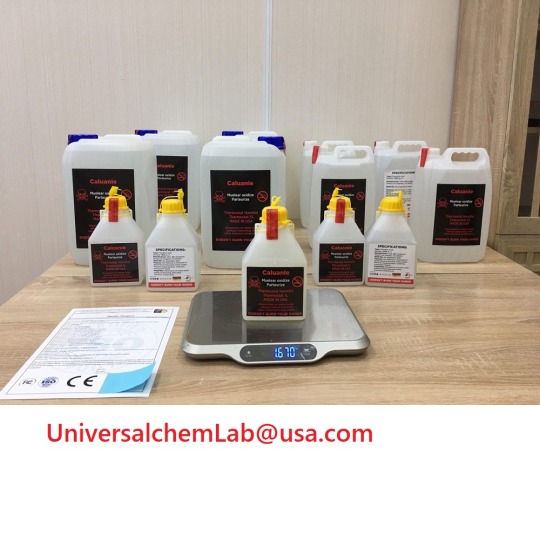
#Rarurit 9#Caluanie Muelear oxidize parteurize#Muelear Oxidize Parteurize Thermostat Harmfu Thermos#Oxidizing parterization thermostat#mining#gemstone#sapphire#necklaces#rare earth minerals#Cuff Links & Tie Clips#Fashion Jewelry#Fine Jewelry#Hair Jewelry#Loose Beads#Loose Diamonds#Loose Gemstones#Loose Pearls
1 note
·
View note
Text
“Why would LB call her magic system science? Why is she afraid of magic?” She did it for me specifically. The hot stem girly. (READ MY TAGS BOY)
#me explaining how a tailor on parem could potentially make someone a new limb#like tailors are a cross between the materialike boys and corporal girls#(last part is meant to be read as that p!atd lyric)#specifically alkemi and healers right#so what I’m thinking is that if they pulled the minerals from the earth and collagen from a body or something#and in ck we see that genya in fact has a jar of straight up cells right#so hypothetically pulling the natural substances from the earth or something and body ones from wherever#maybe potentially they could manage to recreate and arm#the nerves are what’s kinda throwing me off but AGAIN cell jar it’s totally possible#grishaverse#BUT ALL OF THIS IS TO SAY THAT A NORMAL GRISHA COULD NEVER DO THIS#that is completely out of their skill set even w the self healing boost right#creating entirely new organic matter would tip into merzost right#or whatever#ALSO I do believe a healer/corporal thing (not trained like zoya in kos) couldn’t do that#they need to be able to have some material powers SPECIFICALLY the alkemi ones#cuz that’s like chemistry yknow right#I think at least idk I just call them the powder ones lmao#anyways cuz like tailors are specifically mentioned to be rare cuz they’re like a mix#and it’s special training right#so again I think maybe if the wound was fresh enough and you had a coked up genya#you could potentially craft new organic matter#obviously creative liberties are being taken there’s a fucking dragon#god forbid there be some magic bs in this theory#but yeah I just needed to get that out there#my scientific mind has been feeling malnourished lately
28 notes
·
View notes
Link
Trinity geoscientists have developed a cheap and environmentally friendly method for the synthesis of cerianite, a rare earth mineral which holds promise for the treatment of diseases associated with inflammation, including cancer.
The study, published this week in the journal RSC Advances, also provides new understandings of the occurrence and behaviour of cerianite in natural deposits. The research also expands our knowledge about the exploration, exploitation, and extraction of rare earth minerals (REEs). In addition, the findings have implications for biomedical research, the production of carbon neutral technologies and the material sciences.
Adrienn Maria Szucs, PhD researcher in Geochemistry, Trinity, and lead author of this study explained:
"We killed two birds with one stone because we found out why cerianite is associated with REE-carbonates and how exactly it forms in nature and at the same time we produced a cooking book for material engineers with easy recipes for the synthesis of Ce-carbonates and cerianite with different sizes and shapes. On the top of that, the synthesis methods are cost and environmentally efficient. Very convenient!"
Read more.
#Materials Science#Science#Cerium#Minerals#Materials synthesis#Geology#Rare earth elements#Trinity College Dublin
22 notes
·
View notes
Text


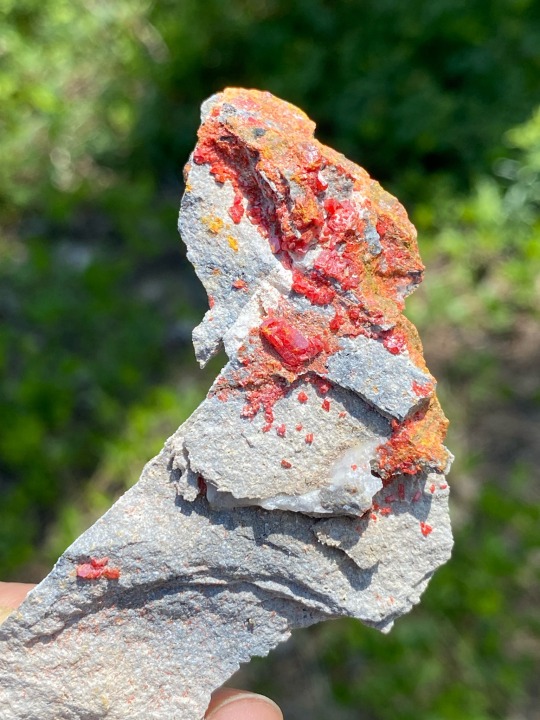

Realgar, Royal Reward Mine, King County, Washington, USA.
Available on my Etsy💎🤗: https://www.etsy.com/shop/ConfluenceMinerals
#crystals#hiking#minerals#mining#quartz#crystal gems#mineralogy#mountains#natural#nature#rare#the rush of rarities#rarity#toxic#mercury#crystal healing#reikihealing#Gaia#mother earth#mother nature#earthcore#earth science#planet earth#science#science rules#optoutside#outdoors#camping#cabincore#forest
12 notes
·
View notes